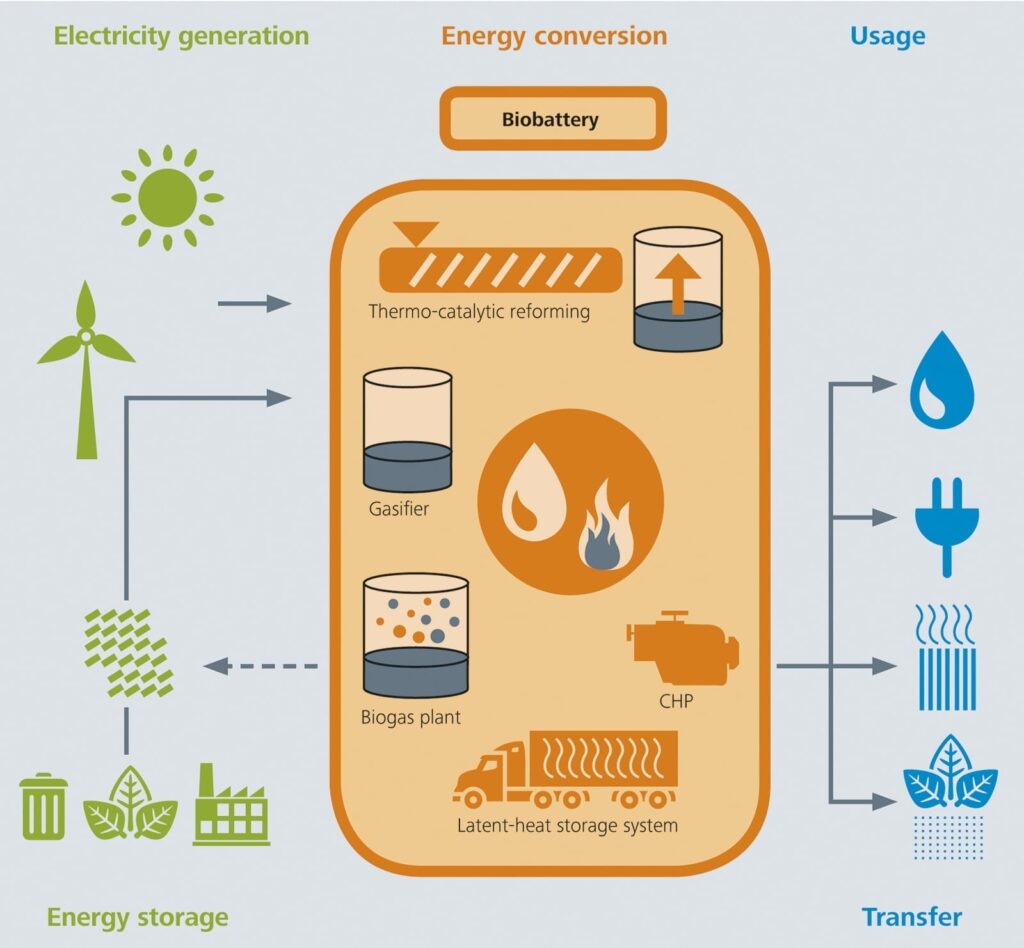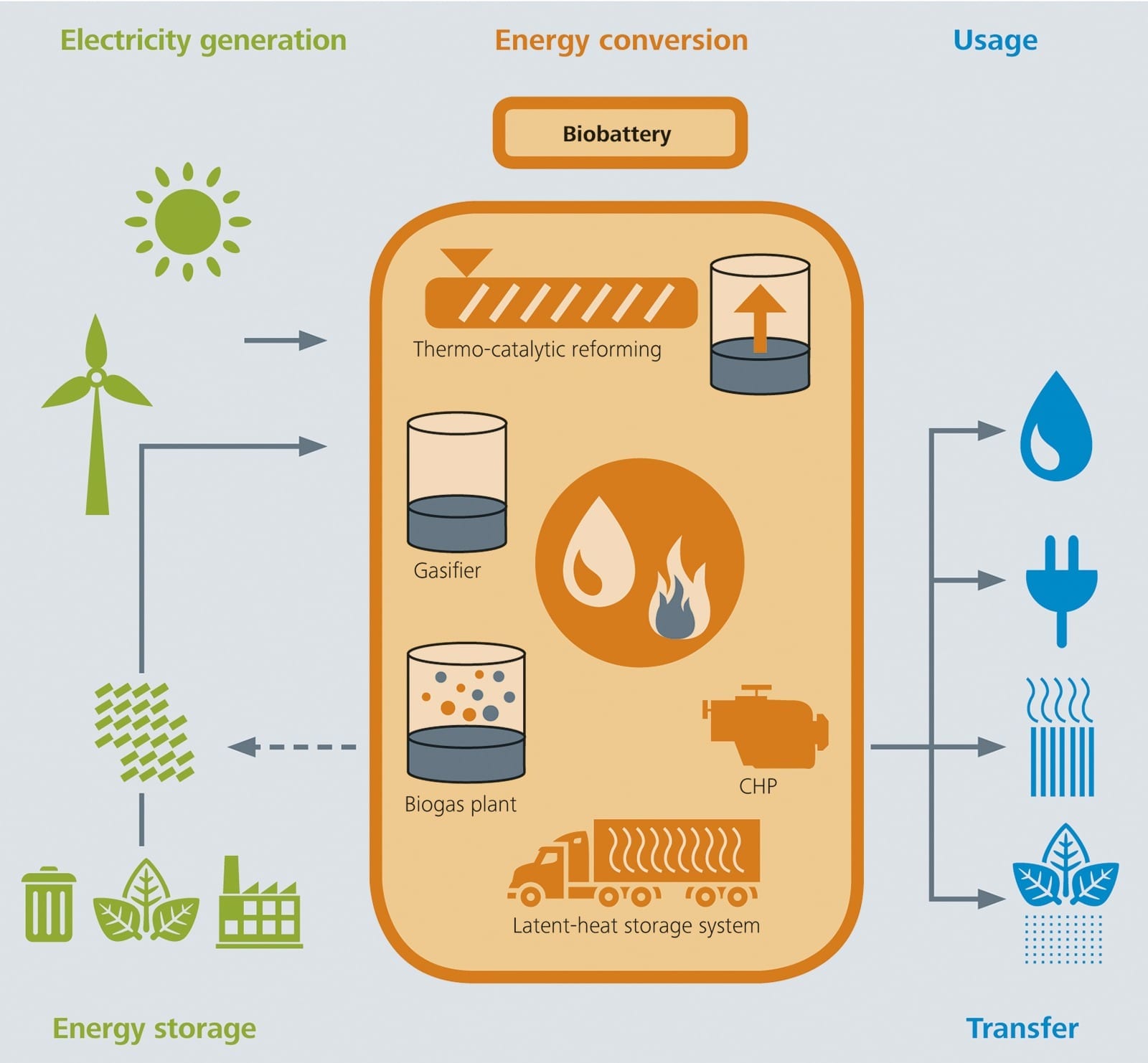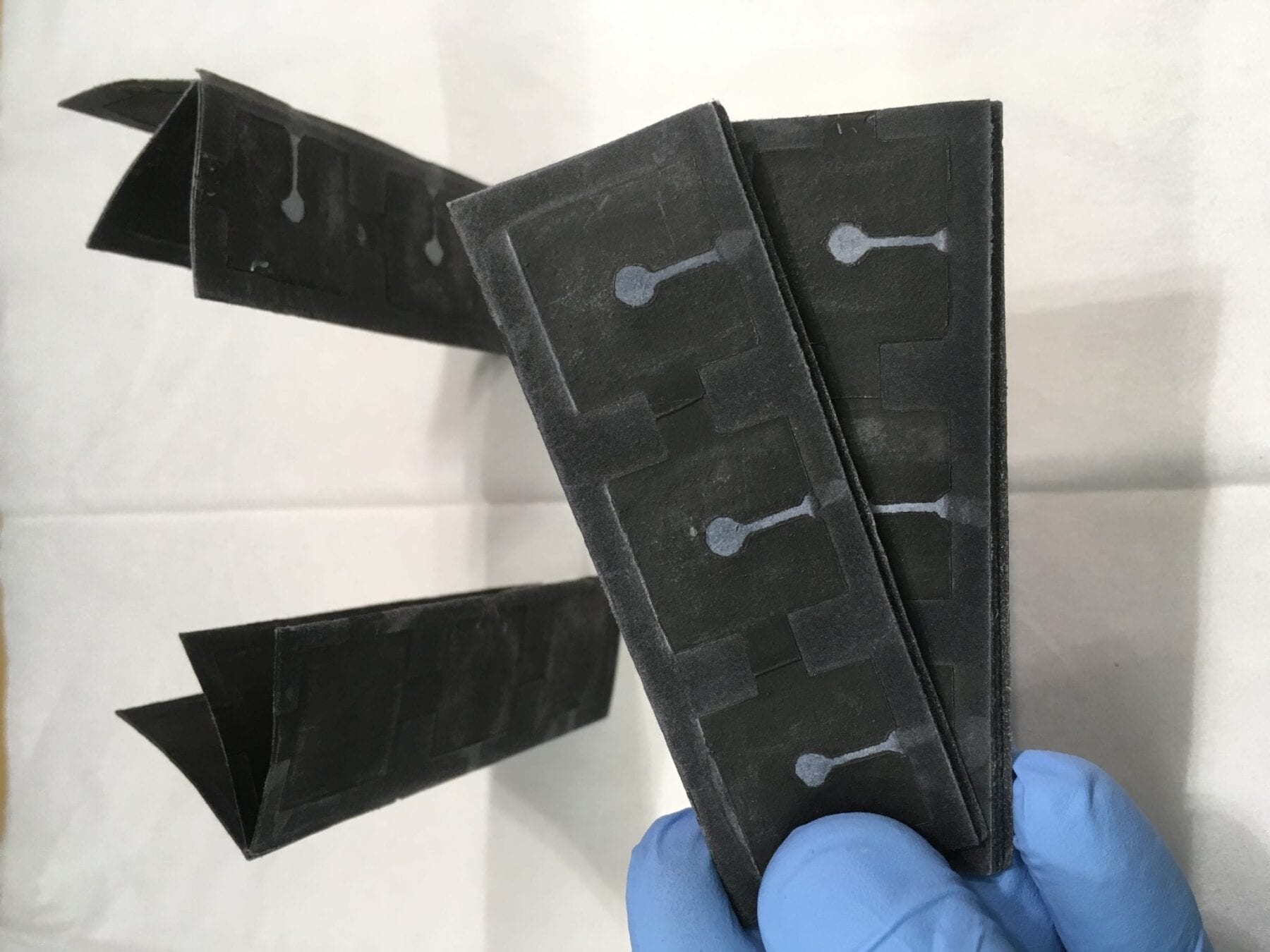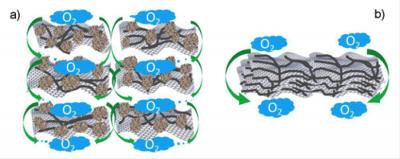
Fraunhofer
Sewage sludge, green waste, production residue from the food industry, straw or animal excrement – with the biobattery‘s modular concept a much larger range of biomass can be utilized for energy recovery than previously.
Researchers show that they can convert organic residues into electricity, heat, purified gas, engine oil and high quality biochar using this process.
Biogas plants are an important element for decentralized energy supply. They produce electricity from renewable resources and can compensate for highly fluctuating wind and solar energy. There are already 8,000 plants in operation in Germany with an electrical output of 3.75 gigawatts in total, that is the equivalent to roughly three nuclear power plants. However, the plants have several disadvantages too: they only process a limited range of organic substances and are in competition with the cultivation of food plants.
Producing electricity, oil, gas and biochars
Scientists from the Fraunhofer Institute for Environmental, Energy and Safety Technology UMSICHT have now succeeded in considerably improving the efficiency of biogas plants. The biobattery process developed by them not only supplies electricity and heat but also high quality products such as gas, oil and vegetable carbon. These can be utilized as required, for example to produce electricity, as marine or aviation fuel, as an admixture for fuels or as a fertilizer. If further processed they even provide basic substances for the chemical industries.
The biobattery is modular and consists of a pool of environmentally-friendly technologies such as biogas plants, thermal storage, carburettors and engines to produce electricity. The heart of the concept is thermo-catalytic reforming (TCR®). With this the experts convert carbons out of organic material, for example fermentation residues from biogas plants and bioethanol production, industrial biomass waste, sewage sludge, straw, scrap wood or animal excrement. The result: oil, gas and biomass cokes. »The particular advantage of the biobattery is that we can utilize a number of raw materials which would otherwise have to be disposed of often at great cost«, explains Professor Andreas Hornung, Director of UMSICHT at the Institute Branch in Sulzbach-Rosenberg.
Read more: The Biobattery
The Latest on: Biobattery
[google_news title=”” keyword=”Biobattery” num_posts=”10″ blurb_length=”0″ show_thumb=”left”]
via Google News
The Latest on: Biobattery
- Feed has no items.
via Bing News











